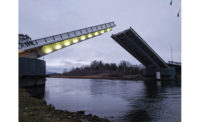As many of us were planning for the New Year ahead, a family in Franconia Township, Pa., was mourning the recent death of 53-year-old David Smith, who was killed when a young driver ran into Smith and another worker while they were painting stripes on a local road. Prosecutors charged the 20-year-old driver with vehicular homicide and aggravated assault.
Sadly, a quick Google search easily confirms what most construction industry professionals already know: Highway work zone fatalities and injuries remain a serious public health issue.
Twenty years ago, Engineering News-Record described the creation of the National Work Zone Safety Information Clearinghouse, which was launched under a contract won by American Road & Transportation Builders Association (ARTBA) with the U.S. Federal Highway Administration (FHWA). “This first-of-its-kind facility,” the editors wrote, contains “a wealth of information on how to make road construction zones safer for motorists, pedestrians and highway workers.”
The clearinghouse reflects ARTBA’s commitment to transportation safety, and its anniversary and its website’s recent redesign provide a good time to take stock of its accomplishments. Today, the clearinghouse is the world’s largest online information resource on work zone safety topics; it has fulfilled 2 million information requests. Key content appears in seven languages, and on a typical day there are about 400 visitors.

One of the redesigned web pages of workzonesafety.org.
Shortly after the clearinghouse was established, the number of roadway work zone fatalities peaked at 1,200 in 2002. In 2016, the most recent year available, fatalities fell to 765.
The improvement can be credited to greater knowledge of safety practices; more safety-conscious contractors, engineers and highway departments; and tougher enforcement by government safety officials. All have helped.
But information provided by the clearinghouse helped, too. Employers, safety professionals and departments of transportation can actually see the challenge they face and the fruits of their efforts. The success of the clearinghouse is best measured by the accidents that have never happened.
That said, until the number is zero, there are too many work zone fatalities and injuries. If Congress passes an infrastructure investment bill and permanent Highway Trust Fund fix this year, these changes ultimately will lead to an increase in the number of work zones as more transportation projects get underway. New safety challenges will arise.
That’s why the clearinghouse isn’t resting on its laurels. Its staff continually looks for innovative ways to deliver content to users—many of whom are on jobsites—via smartphones, tablets and other technologies. Think augmented reality.
The clearinghouse provides new content for its website workzonesafety.org, promotes the annual National Work Zone Awareness Week (April 9-13) and hosts with FHWA a National Traffic Management and Work Zone Safety Conference (Sept. 10).
The clearinghouse website redesign makes it easier to find and use the data and resources. In addition to new landing pages for special subjects, the core data about work zone crashes, fatalities and injuries are easier to read, with icons and an interactive map of the U.S. for easy access to state-level information.
The job of protecting transportation construction industry workers and the motoring public is never done, nor is it solely the responsibility of any single trade association or profession. Collectively, it is everyone’s job to reduce the number of family tragedies like the one in Franconia Township, Pa.
Matt Cummings, an executive vice president with AECOM, and Paul Yarossi, executive vice president of HNTB Holdings Ltd., are chairman, respectively, of ARTBA and the ARTBA Foundation.
If you have an idea for a column, please contact Viewpoint Editor Richard Korman at kormanr@enr.com.



